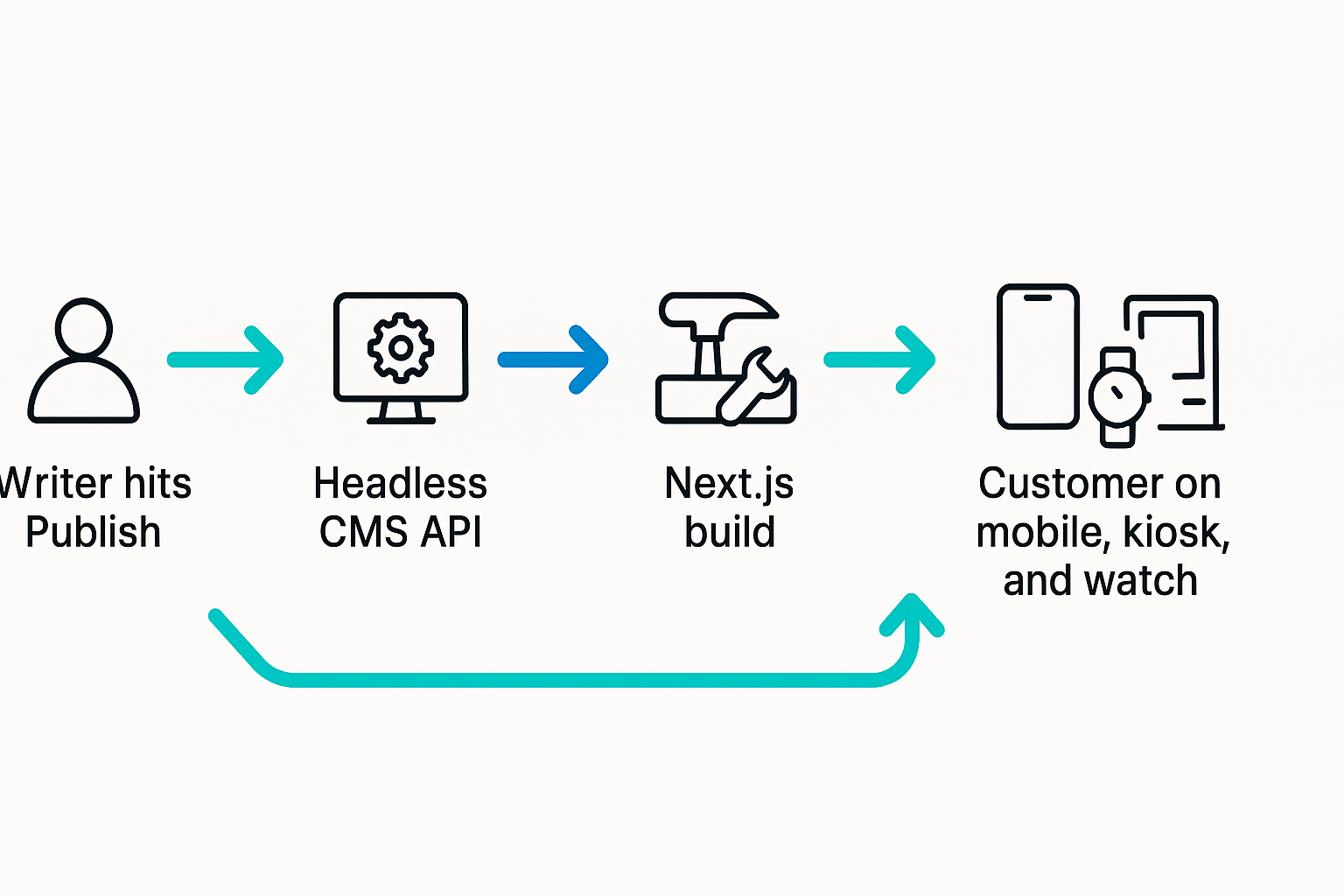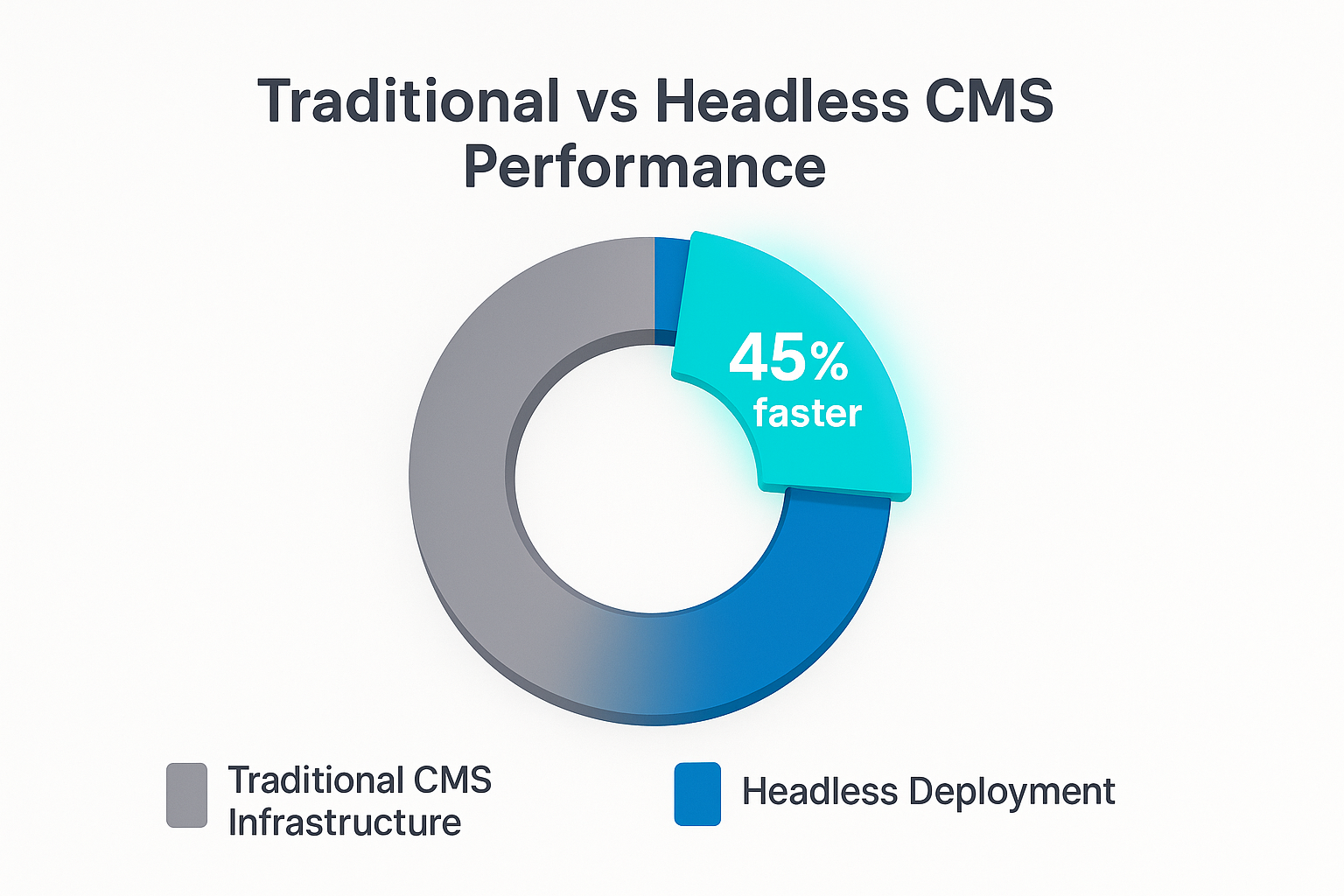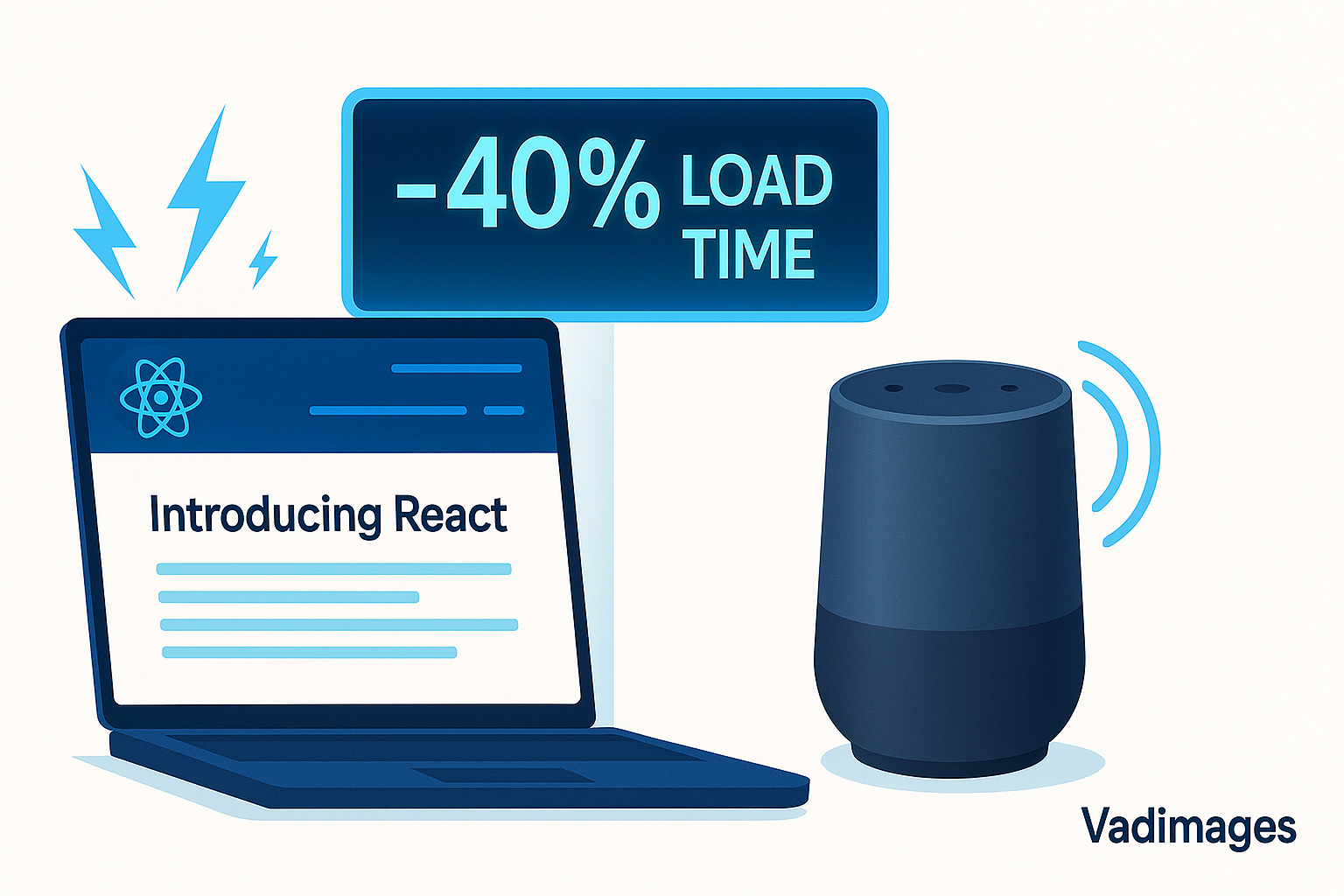Headless CMS in Everyday Language
Think of the content that powers your site as a neatly packed shipping container. Inside are every article, photo, product spec, and testimonial your brand relies on. A traditional content-management system loads that container onto a single truck, drives it along a fixed route, and shows up only at one loading dock—your website. A headless CMS, by contrast, lets that same container ride a train, a drone, or a cargo ship, arriving wherever customers happen to be: a React web storefront, an iOS app, a smart-speaker skill, or even the digital price tag on a store shelf. The back-end “head” where editors write and store content is cleanly separated from the “body” that presents it, connected only by secure APIs. Developers gain total freedom in front-end design, editors keep a familiar dashboard, and sensitive data stays tucked away behind a read-only gateway.
That architectural freedom is no fringe experiment. Future Market Insights expects the global headless CMS market to leap from roughly USD 974 million in 2025 to more than USD 7 billion by 2035, a compound annual growth rate north of twenty-two percent. The upheaval signals a wider truth: speed, security, and omnichannel delivery have shifted from luxury to baseline expectation—even for mom-and-pop shops.
Why U.S. Small and Mid-Sized Businesses Are Paying Attention
Performance and reach are the headline benefits. A decoupled front end served from edge CDNs often chops First Contentful Paint times by forty percent compared with monolithic stacks, and Google’s Core Web Vitals now bake that speed directly into search rankings. The 2024 “State of Headless” survey reports that more than forty percent of companies under USD 10 million in annual revenue already run, or are piloting, headless initiatives so that one set of copy can power websites, social feeds, mobile apps, smart-speaker answers, and in-store screens without redundant copy-and-paste work.

The payoff is measurable. Deloitte’s “Milliseconds Make Millions” study showed retail conversions rising 8 percent when mobile pages loaded merely 0.1 second faster. If your Minneapolis boutique clears twenty thousand dollars in monthly online sales, shaving half a second off checkout could add close to ten grand a year—without buying more ads. Security also climbs: editors never touch the public server, so the attack surface shrinks, and rate-limited APIs make compliance with HIPAA, SOC 2, or PCI rules far simpler.
The Catch: Complexity, Cost, and Culture
All that flexibility comes with trade-offs. Your marketing team loses drag-and-drop previews unless developers rebuild them, and structured content models can feel abstract at first. Multiple build pipelines introduce fresh failure points—a single mis-scoped token or expired SSL certificate can blank every channel at once. The same “State of Headless” research warns that organizations consistently underestimate ongoing maintenance: schema governance, automated tests, and edge-cache purges must all be budgeted from day one.

Budgets can wobble in year two. Most SaaS headless vendors charge per API request or gigabyte of bandwidth, so a viral TikTok featuring your HD product teaser can turn last month’s USD 49 plan into a four-figure bill. Talent is another constraint. Frameworks such as Next.js or Astro lean on TypeScript, GraphQL, and static-site-generation skills that fetch premium salaries in U.S. metros. Rural manufacturers and local nonprofits often discover that outsourcing beats assembling an in-house team, but only if the partner truly understands both front-end performance and brand voice. Legal and branding workflows need upgrades too: once content appears on kiosks, voice assistants, and electric-car dashboards, metadata for expirations, localization, and brand safety must be airtight or an outdated disclaimer may linger in an edge cache long after you think it is gone.
How to Decide and Why Vadimages Can Help
Begin with a content audit that maps every place customers will look for you over the next twelve months. If that map ends with “website plus newsletter,” modernizing a monolithic CMS may deliver maximum return with minimal fuss. But if your roadmap includes mobile apps, partner portals, in-store kiosks, voice assistants, or AR experiences, the scalability of headless quickly outweighs its complexity. Build a three-year total-cost-of-ownership model that rolls in licensing, CDN bills, developer time, and the opportunity cost of slow pages. Finally, test a proof-of-concept before committing production data.
This is where Vadimages steps in. Our U.S.-based studio has walked Portland craft breweries, Dallas dental practices, and Cleveland distributors from zero to headless without a hiccup. In a single-day Headless Readiness Workshop we benchmark your Core Web Vitals, simulate Black-Friday traffic, and forecast API costs under real-world marketing campaigns. Two weeks later you receive an interactive prototype that mirrors your brand’s voice on web, mobile, and voice surfaces—ready for stakeholder demos.

On the build side, Vadimages engineers tap Next.js and Astro for ultra-fast static builds, wrap your content APIs behind rate-limited edge gateways, and automate visual-diff testing so editors never push a broken layout live. Structured-content boot camps get your writers comfortable with modular blocks, while phased rollouts preserve SEO equity. Managed CDN partnerships keep bandwidth bills predictable, and every contract ships with a clear U.S. service-level agreement. Book your complimentary discovery call today and watch your small business punch far above its digital weight, powered by a headless stack you actually understand.
